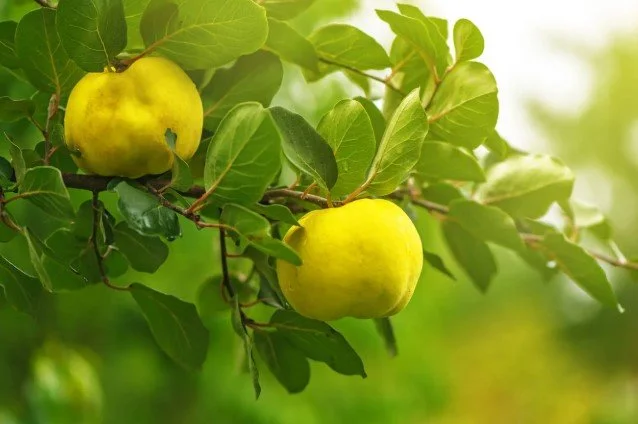November’s Garden Update
They dined on mince, and slices of quince
Which they ate with a runcible spoon;
And hand in hand, on the edge of the sand,
They danced by the light of the moon.
From ‘The Owl and the Pussycat’, by Edward Lear
I, like many others I assume, have been gifted with a relative abundance of the ugliest fruit imaginable this autumn. Probably because of the extraordinary summer, I was able to harvest twelve whole quinces from the four trees we have in the walled garden. You might think this sounds like a very small amount for a comparatively large amount of garden real estate and you’d be right, but it’s a 100% increase on previous years yields and so I’ll take a win where I can. This pales in comparison to the approximately 300kg of apples that made its way down to the borders to be pressed last week, but nevertheless made me realise that I hadn’t given very much thought to the quince, and in truth was even unsure of its Latin name which as it turns out is Cydonia oblonga.
The tree itself is native to the ancient Hyrcanian forests of Iran, and radiated out via Neolithic farmers between 5000 and 3000BC to Turkey, Syria, Azerbaijan, Kashmir, and Greece where it was cemented in Greek mythology when Paris gifts Aphrodite the Golden Apple of Hesperides, which was likely to have been a quince. Indeed, because of the time period and geography of the Old Testament, it is also likely that the apple referred to in the story of Adam and Eve was a quince. Not that you’d need to be discouraged by holy orders from eating a quince – the fruit is extremely sour and puckeringly astringent, only becoming palatable when boiled with sugar which is how it is generally prepared, at least in Europe. An interesting aside is the fact that marmalade wasn’t made with oranges until the eighteenth century. The word marmalade derives from the Portuguese marmelado which in itself derives from the Portuguese for quince: marmelo; which is why when Henry VIII was gifted a box from abroad labelled ‘marmeladoo’ in 1524 it contained not orange marmalade but a confection made from, you guessed it, quinces.
Despite having brought about the fall of man, quince trees arrived in Britain, via France, in 1275 when Edward I planted six outside the tower of London and was common in kitchen gardens until the middle of the last century. I was toting around my small bucket of quinces for about four weeks, trying to palm them off on anyone who looked like they might have at some point made jam, or knew somebody who had, or had perhaps had jam described to them. One person went so far as to take them and then leave them by the door of my car for me to find later, presumably having looked more closely at them in the cold light of day (quince are hard, lumpy, and botanically speaking, ‘pubescent’, and these ones in particular were pretty battle scarred by this point), but there were no takers. It was from here that they made their way into my car boot and made my car smell like expensive aftershave for several weeks, and from there begrudgingly to my kitchen where with a little effort they became the most beautiful ruby rose coloured jelly. It’s hard to imagine now a fruit that needs boiling for two hours to be palatable enjoying any kind of enduring appeal but I think that is the beauty of it – if you know, you know; and even better, if you know somebody with a quince tree you might be blessed every ten years with a higgledy-piggledy jar of homemade jelly that you can’t buy in the shops.
❦
I wanted to end this dispatch with a couple of bits of news from the garden. One is that we are very excited to be attending the Rosemains Winter Market on the 29th of November, alongside some truly stellar vendors. We’ll have pots of bulbs, Christmas foliage, and all being well some garden-grown apple juice for sale. If you’re interested in a pot of scented paperwhite narcissus to enjoy now, please get in touch with us as we also have some ready for collection from the garden.
Secondly, we are on the lookout for a new team member to join the walled garden. Full details are now on our website, so if you think you’d be a good fit we’d love to hear from you!
Kate

